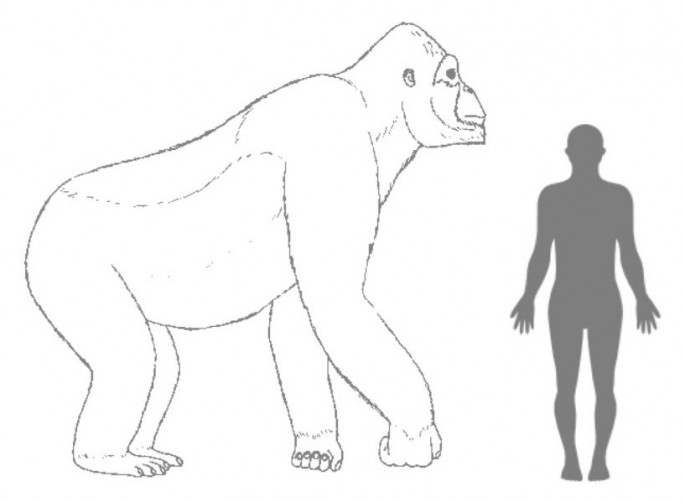The world's last largest ape species known as the Gigantopithecus, apparently died out 100,000 years ago when the Earth's climate changed, also wiping out the ape's ideal source of food such as forest fruit, that were later replaced by grasslands.
This ancient ape ancestor also appears like a real life "King Kong" from Hollywood movies, that weighed around 1,102 pounds or five times larger than the modern adult male ape. This majestic ape reigned over the forested regions of southern China and most of mainland Southeast Asia, according to this new study.
However, not until this new study, not much was known about this ancient primate ancestor of the orangutan. The only fossilized remains that were found were only four partial lower jaws and not more than a thousand teeth which were first seen during the 1930s in Hong Kong, usually in apothecaries naming them as "dragon's teeth".
For scientists however, these fossils are still not enough to conduct a thorough analysis to determine the anatomy and physical attributes of the giant ape and if it walked on two or four legs.
Now, researchers from Senckenberg Center for Human Evolution and Palaeoenvironments in Tübingen with scientists from Senckenberg Research Institute in Frankfurt have analyzed this fossilized ape tooth enamel to discover more clues about the creature's diet. Apparently, the Gigantopithecus were very picky eaters, following a strict vegetarian diet, where they largely depended on fruit trees and forested regions.
During the Ice Age that occurred during the Pleistocene era between 2.6 million years back up until 12,000 years ago, massive glaciers covered the planet and ultimately changed the ape's habitats.
Despite some ancient ape species and early humans surviving this dramatic environmental change, this ape unfortunately did not adapt to the changing Earth, according to Herve Bocherens from the Tübingen University in Germany, adding that nature, evolution and the refusal to adapt to new food, wiped out the species.
Bocherens adds that due to its massive size, the Gigantopithecus also depended upon massive amounts of food that during the Pleistocene, these forested regions transformed into Savannah landscapes, replacing them with grasslands instead.
This new study is published in the journal Quaternary International.




























